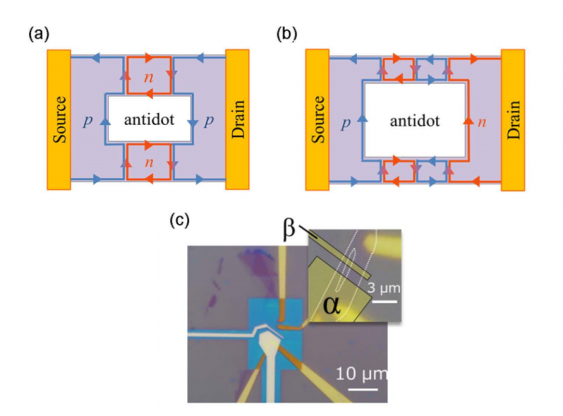(a) and (b): Schematic picture of the chirality of the quantum Hall edge states around a single antidot when the number of PNJs (N) is (a) even and (b) odd. The present study has established that the conductance is essentially different between the two cases, namely the parity effect. (c) Optical image of the device. The inset shows that this device has a single open window (an antidot) shown by the white curves. We tuned the top gate voltages of these two top gate electrodes, marked as a and b, in order to experimentally realize the cases with N = 0, 1, 2, and 3
A world first! Parity effect observed in graphene, a material garnering great attention
KOBAYASHI Kensuke (Professor, Graduate School of Science, Osaka University) and MATSUO Sadashige (Assistant Professor, School of Engineering, The University of Tokyo), in a collaborative research effort with a research group led by ONO Teruo (Professor, Institute for Chemical Research, Kyoto University) and TSUKAGOSHI Kazuhito (Lead Researcher, International Center for Materials Nanoarchitectonics, National Institute for Materials Science), have theoretically projected and successfully proven through experimentation the parity effect of the quantum Hall edge transport in graphene antidot devices with pn junctions (PNJs). Graphine, or single-layered graphite, has properties of both metals and semiconductors.
This group confirmed that the parity effect in graphene antidot devices has a good analogy to optical systems. This means various quantum interference devices can be produced by using the quantum hall edge transport with pn junctions.

(Link) http://resou.osaka-u.ac.jp/en/research/2015/20150630_1









